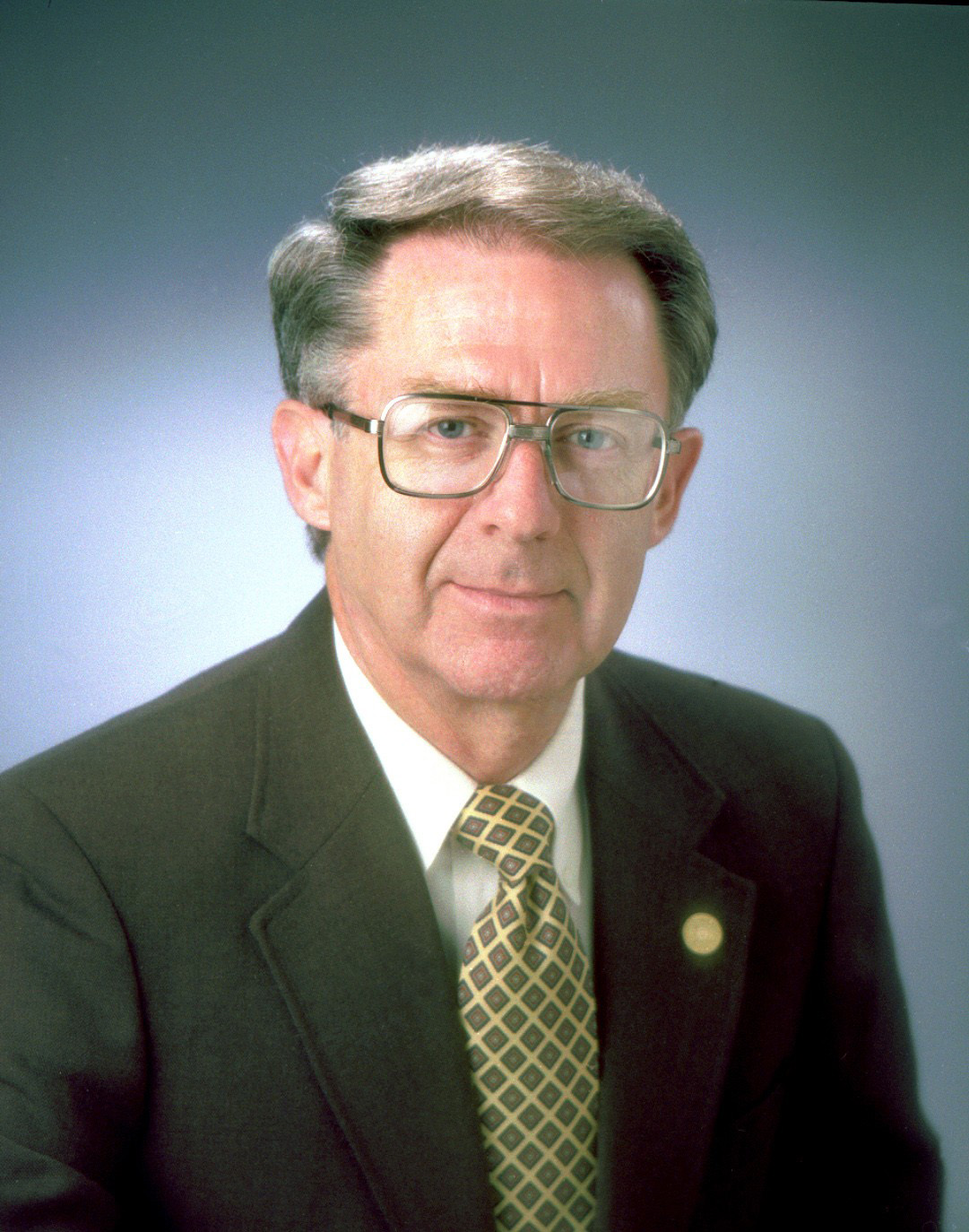Contact: Phil Hearn

STARKVILLE, Miss.--When author Tom Clancy writes about the Department of Defense's High Performance Computer Modernization Program in his latest Net Force novel, "Springboard," he's referring to a program involving Mississippi State.
"One of the things Jay had found out was that the HPCMP didn't just do sims (simulations)," Clancy writes of character Jay Gridley on page 41 of the 2005 release.
"They coordinated immense computing power for other uses as well--modeling of new missiles, design of new weapons and vehicles, and other R&D," he adds. "If there had been a break into their network, the potential for espionage could be serious indeed."
The HPCMP reference by one of the nation's best-selling authors pleasantly surprised longtime MSU aerospace engineering professor Joe F. Thompson. He heads the MSU-based Center for Department of Defense Programming Environment and Training (PET) program, which is a part of DoD's computing modernization program.
"It was exciting to hear," said Thompson, who was advised of the reference by a Clancy fan and PET collaborator at the Ohio Supercomputer Center. "You know you've arrived in the high-tech world when you show up in a Tom Clancy novel."
Thompson's PET program--based at the university's ERC (Engineering Research Center)--seeks to solve defense-related computer software issues in 10 highly technical areas, running the gamut from computational fluid dynamics to signal and image processing. The Grenada native was the founding ERC director.
MSU leads a consortium of 10 universities and two private companies in matching high-performing computing expertise with specific research needs. DoD has just approved the fifth $13.5 million installment of an eight-year, $108 million -allocation for the PET program--often called the largest competitive research grant ever made to a Mississippi institution of higher learning. The latest yearlong grant is effective June 1.
"Through PET, we provide technical support on defense issues ranging from the simulation of terrorist events to environmental quality modeling," said Thompson, a William L. Giles Distinguished Professor of Aerospace Engineering and newly elected Fellow of the American Institute of Aeronautics and Astronautics.
As a part of the HPCMP, the MSU-led program is responsible for gathering and deploying the best ideas, algorithms and software tools emerging from the national high-performance computing infrastructure into the DoD user community. The PET contract harnesses bold and innovative university, industry and government resources.
"In this effort, the MSU-led PET team has assisted DoD with analysis related to the Predator (unmanned aerial vehicle) used in Afghanistan and Iraq, the Pentagon retrofit following the 9/11 impact, protection of buildings from terrorist attacks, battlefield event modeling, vehicle and weapons systems, and ocean and atmospheric forecasting," said Thompson.
An authority on numerical grid generation and computational fluid dynamics, Thompson earned bachelor's and master's degrees in aerospace engineering from what now is MSU's Bagley College of Engineering in 1961 and 1963, respectively. He completed a doctorate in the same discipline from the Georgia Institute of Technology in 1971. Robert Moorhead, professor of electrical and computer engineering, is one of Thompson's 10 technical leaders in the PET program.
MSU's leadership partner in the PET effort is the Ohio Supercomputer Center. Other members of the coalition include the Ohio State University, universities of Texas, Tennessee, Alabama at Birmingham, and Hawaii. Others include, Jackson State, Central State and Florida International universities, along with Computer Sciences Corp., an information technology services firm based in El Segundo, Calif., and SAIC, a San Diego, Calif.-based research and engineering company.
NEWS EDITORS/DIRECTORS: For more information, contact Dr. Thompson at (662) 325-7299 or joe@erc.msstate.edu.